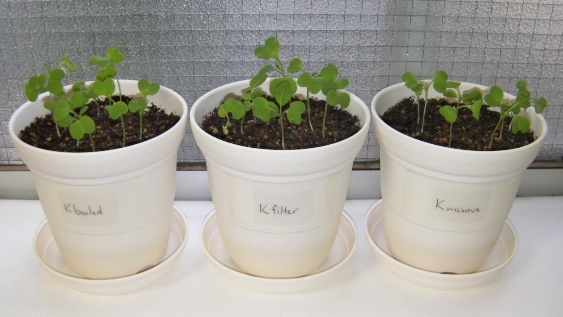

Investigate the ecological health risks of EOCs. Therefore, a source–pathways–receptor–impact/consequence (SPRI/C) concept is applied to By comparison, comprehensive reviews of the evidence on the ecological health risks in aquatic and terrestrial organisms have been missing. However, the bulk of earlier reviews have been limited to the origins, detection, fate and behaviour of EOCs. Due to their prominent industrial applications, EOCs have been detected in terrestrial and aquatic systems as well as in airborne particulates. All rights reserved.Įmerging organic contaminants (EOCs) is a broad group of synthetic chemicals receiving public and research attention.
#Microcosm effect full
Combining passive sampler extracts with standard toxicity tests offers promising perspectives for ecological risk assessment., The full implementation of the proposed approach however requires adaptation of the legislation to scientific progress. In addition, analysis revealed that herbicide mixture toxicity is correlated with macrophyte disappearance in the field relating mainly to emissions from maize cultures. Algae tests were more sensitive to endpoints affecting PSII and reproduction than to growth and could be best predicted with the Concentration Addition model (CA). Pesticide pressure in the 24 analysed streams was mainly exerted by flufenacet, terbuthylazine, nicosulfuron and foramsulfuron with occasional impacts by the non‐agricultural biocide diuron. This methodology has been tested using Luxembourgish rivers as case study and has proven to be a fast and reliable information source that is complementary to chemical analysis, allowing to assess missing target analytes.

This study proposes a screening method combining polar organic chemical integrative samplers (POCIS) with mode of action‐specific toxicity testing on microalgae exposed to POCIS extracts, as a standard approach to effectively address the problem of herbicides mixture effects detection. Such pollution can have direct impact on autotrophic species, as well as indirect impacts on freshwater communities through primary production degradation. Pesticide contamination, in particular herbicidal loading, has been shown to exert pressure on surface waters. Pesticide risk assessment within the EU Water Framework Directive (WFD) is largely deficient in the assessment of the actual exposure and chemical mixture effects. Finally, the regulatory framework is placed in relation to the need to reduce impacts on the environment. The trend of contamination is analyzed and the most critical substances and the phenomenon of poly-exposure are examined.

The 2019-2020 monitoring results are presented in terms of the recovery frequency and concentrations distribution, the levels of contamination obtained by comparison with the environmental quality standards are assessed. The Report provides information on the presence of residues of plant protection products in surface water and groundwater. Infine, il quadro normativo è posto in relazione all’esigenza di ridurre gli impatti sull’ambiente. Si analizza l’evoluzione della contaminazione e si esaminano le sostanze più critiche e il fenomeno della poliesposizione. I risultati del monitoraggio 2019-2020 sono presentati in termini di frequenza di ritrovamento e distribuzione delle concentrazioni, sono valutati i livelli di contaminazione ottenuti per confronto con i limiti di qualità ambientale. Il Rapporto fornisce informazioni relativamente alla presenza di residui dei prodotti fitosanitari nelle acque superficiali e sotterrane. The results indicate that TDC exposure during perinatal development may perturb the formation of T cell immunity later in life. TDC exposure during metamorphosis slowed post-metamorphic migration of the thymus reduced the renewal of cortical thymocytes and splenic CD8+ T cells.

Extending our previous study showing a delay in metamorphosis completion, here we report that TDC exposure prior to metamorphosis reduced the frequency of surface MHC-II+ splenic lymphocytes and weakened some aspects of the anti-viral immune response. laevis tadpoles were exposed to an environmentally relevant mixture of TDCs, either during early tadpole development, or immediately before and during metamorphosis, to assess T cell differentiation and anti-viral immune response against FV3 infection after metamorphosis. While there is some evidence to suggest that disruption of the thyroid hormone (TH)-axis during perinatal development may weaken T cell immunity later in life, data are currently lacking on whether environmentally relevant thyroid disrupting chemicals (TDCs) can induce similar outcomes.


 0 kommentar(er)
0 kommentar(er)
